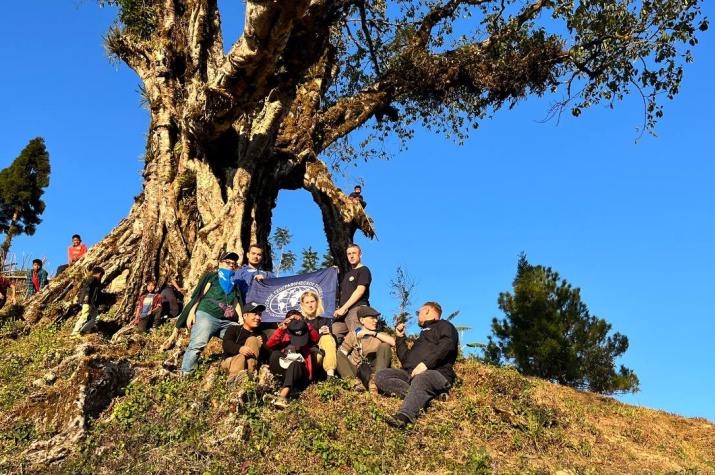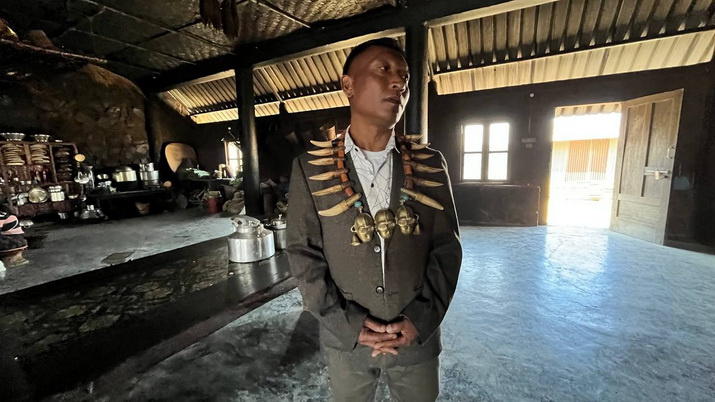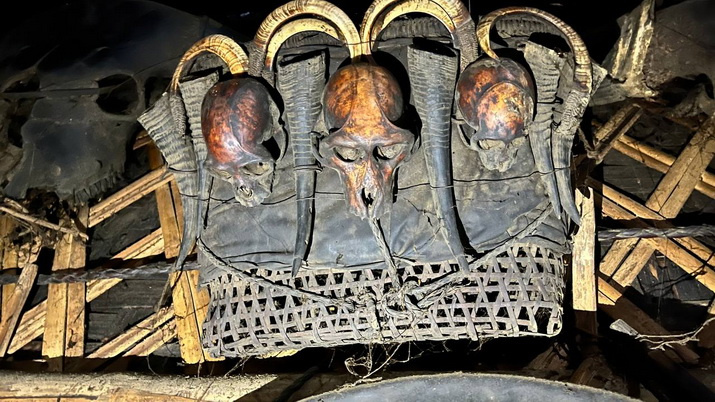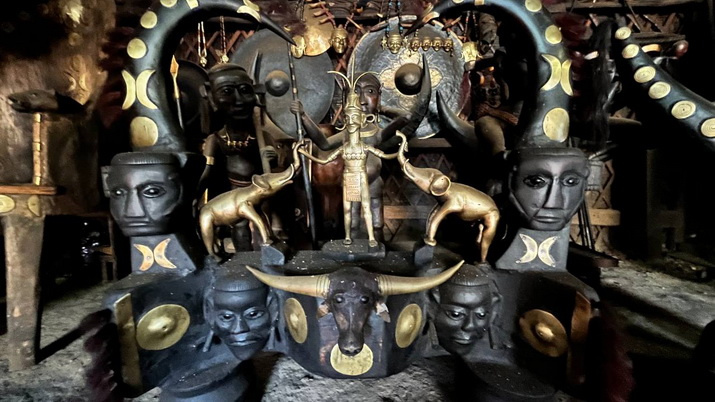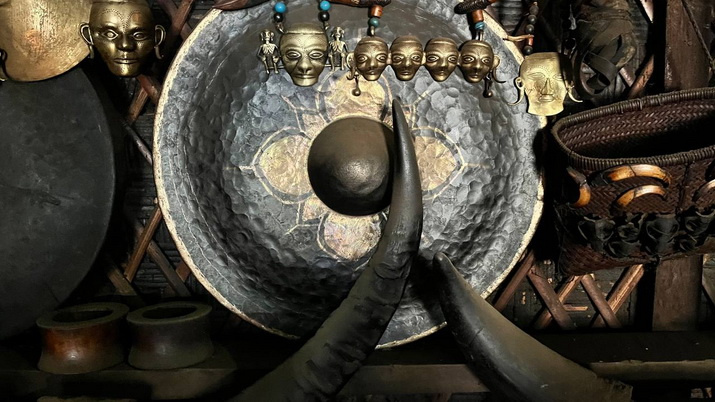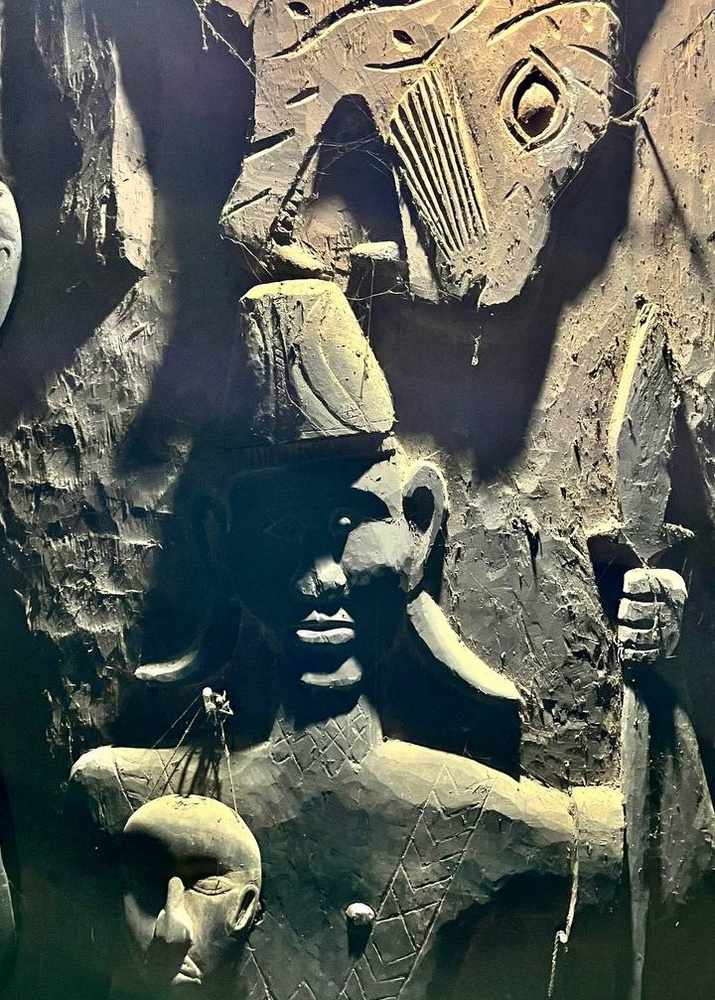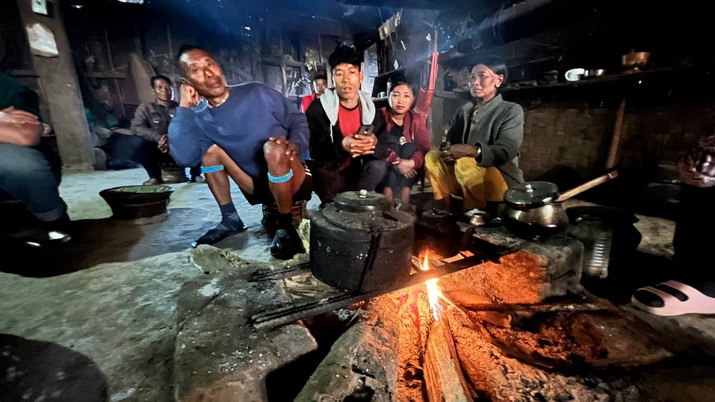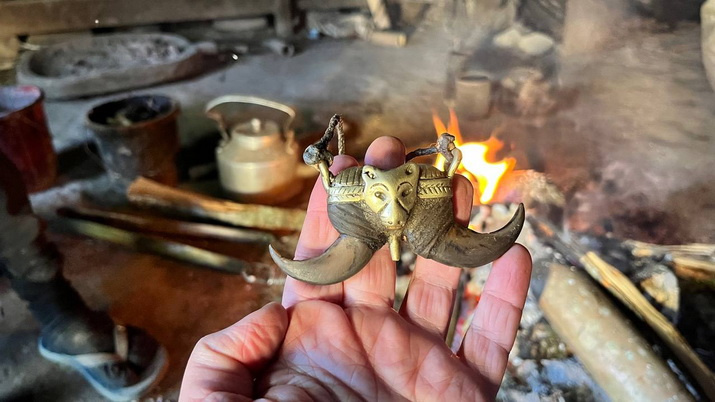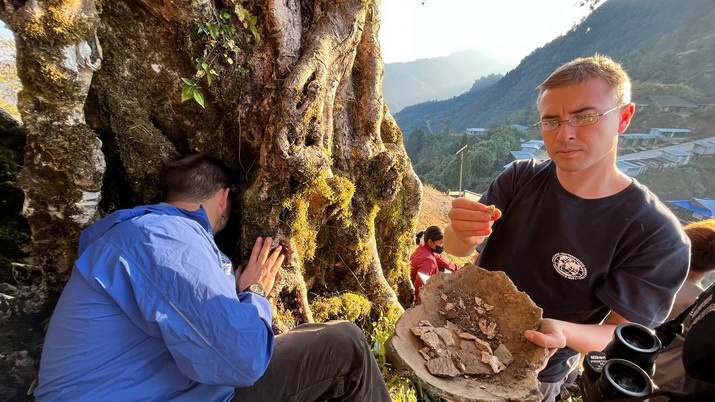During a visit to the state of Nagaland, the nature camp of the Russian Geographical Society made some amazing observations in the village of Longwa, where the residence of the chief king of the Mon district is located. The Konyak tribes living in the area are subordinate to him.
Everything is very strict. We entered the village of Longwa through a checkpoint. Every member of our group checked in at the police station. By the way, the law enforcement agencies were somewhat wary of us.
The village is large, spread out on the hills. The residence of the king is literally on the border between two states – India and Myanmar. The building of the royal palace has the depictions of two symbols – the state of Nagaland and Myanmar.
The difference between the territories of the two countries is clearly visible. If you look towards Myanmar, you find bare slopes. Towards Nagaland, there are also mountains, but covered with forests.
Locals call their king “chief king”. We arrived in the village on Sunday, when Supreme King Angh Tonyu was attending Sunday service at the Baptist church.
“To be in the village at this moment was great luck. It is noteworthy that people dress smartly on Sunday and attend church with the whole family. Of course, this indicates that religion is not just a formality for them, but an important component of life,” said the member of the camp Daniil Butorin.
After the chief king returned, we paid our respects to him, and the head of the nature camp, Anton Yurmanov, handed over diplomatic gifts in the form of souvenirs from the Russian Geographical Society.
The meeting was held at the royal palace. It is built of modern materials, but the architecture is traditional. There are several halls inside. In one of them there are items of royal luxury, huge chairs with tiger heads, exquisitely decorated shields, jewelry, etc. There is a hearth on the floor in the reception hall. After the meeting, we received permission from the chief king to conduct obsrvations in the village of Longwa.
Then we paid a visit to Assistant King (or Viceroy) Angh Amao, who performs the functions of the chief king in the Longwa region. Having settled around the hearth, we began to discuss the connection of the Konyaks with nature, their role in the culture of Nagaland, as well as the state of the soil in the region.
There are plantations on the slopes of the mountains near the village of Longwa. And we wondered what happens to the soils as a result of their erosion by slope processes? Is there an erosion problem?
The viceroy complained that they really have such problems, mainly during the construction of houses. He also admitted that the forest fund is gradually being depleted. And if ten years ago local residents used large tree trunks for construction, now they are forced to link several small ones to ensure the stability of a structure.
What should they do? What can be done to fix the situation or at least not to aggravate it?
“We may recommend starting the restoration of the forest fund from the river valleys flowing along the slopes with exposure to the north. The northern slopes are shady; they retain more moisture even in the dry season. As a result, they recover faster. Thus, in ten years, the current situation can be corrected," explained Yaroslav Lebedev, the camp's member.
It is difficult for the local residents to refuse the usage of the southern slopes. There's a lot of moisture and heat there. Agricultural crops have good germination, especially during the monsoon rains.
“Gradual creation of forest belts on the southern slopes will help to avoid mudslides and mitigate the effects of droughts. As a result, both an increase in yield and the stability of the crops will be ensured. We have provided all these recommendations to the assistant king," Yaroslav Lebedev added.
Although the village of Longwa is a popular destination among foreign visitors, domestic tourism prevails here. As it turned out, even in the state of Nagaland there are many Indians who want to get acquainted with the Konyak culture and see the border with Myanmar.
“However, local tourism has two sides,” Anton Yurmanov explained. “Tourists come to get acquainted with the village, the inhabitants of which are among the last to stop headhunting. Everything is as usual: a guide's story, tourist souvenirs, a visit to the royal house, photographing against the background of attractions, etc. The reverse side is hidden from prying eyes. There are a lot of things in it that are not always legal. Although this is real life.”
During our visit to the village, we were accompanied by the chief king's daughter Linyu. It was she who showed us a huge ficus tree, spread out on a hill, under which the locals arranged the burial of skulls. Previously, this evidence of headhunting was kept in one of the village houses.
The burial was plundered. Between the roots of the tree we found fragments of ceramics, jewelry, bone remains. Why did this happen?
“Of course, many are attracted by the tourist brand associated with headhunting, cruel and frightening. The history of these peoples, their unusual culture is also attracting. At the same time, the last living Konyaks who practiced headhunting have long since converted to Baptism and tell the younger generation that manliness can be found without cutting off the heads of the residents of the neighboring villages. Therefore, for the locals, it's all a page turned," Anton Yurmanov summed up.
In the village of Longwa we have gathered a large collection of modern ethnographic objects. Some were given to us, some we traded for. For example, Anton Yurmanov gave his handmade knife in exchange for a real Nagaland, very respectable and look like old one.
The RGS’s group is coming to an end, and we are heading back.
About the nature camp
The complex nature camp of the Russian Geographical Society began on December 27, 2022. Location: Republic of India, Tajura region, states of Arunachal Pradesh, Meghalaya, and Nagaland. Main tasks: conducting ecological, biological, geographical, geological, ethnographic (among the Adi, Mishmi, Konyak tribes) observations during nature walking and search activities to find out the crash sites of Allied military aircraft from 1943-1945. Expedition leader: Anton Yurmanov, biogeographer, director of the Youth Work Department of the Russian Geographical Society.
Leonid Kruglov

